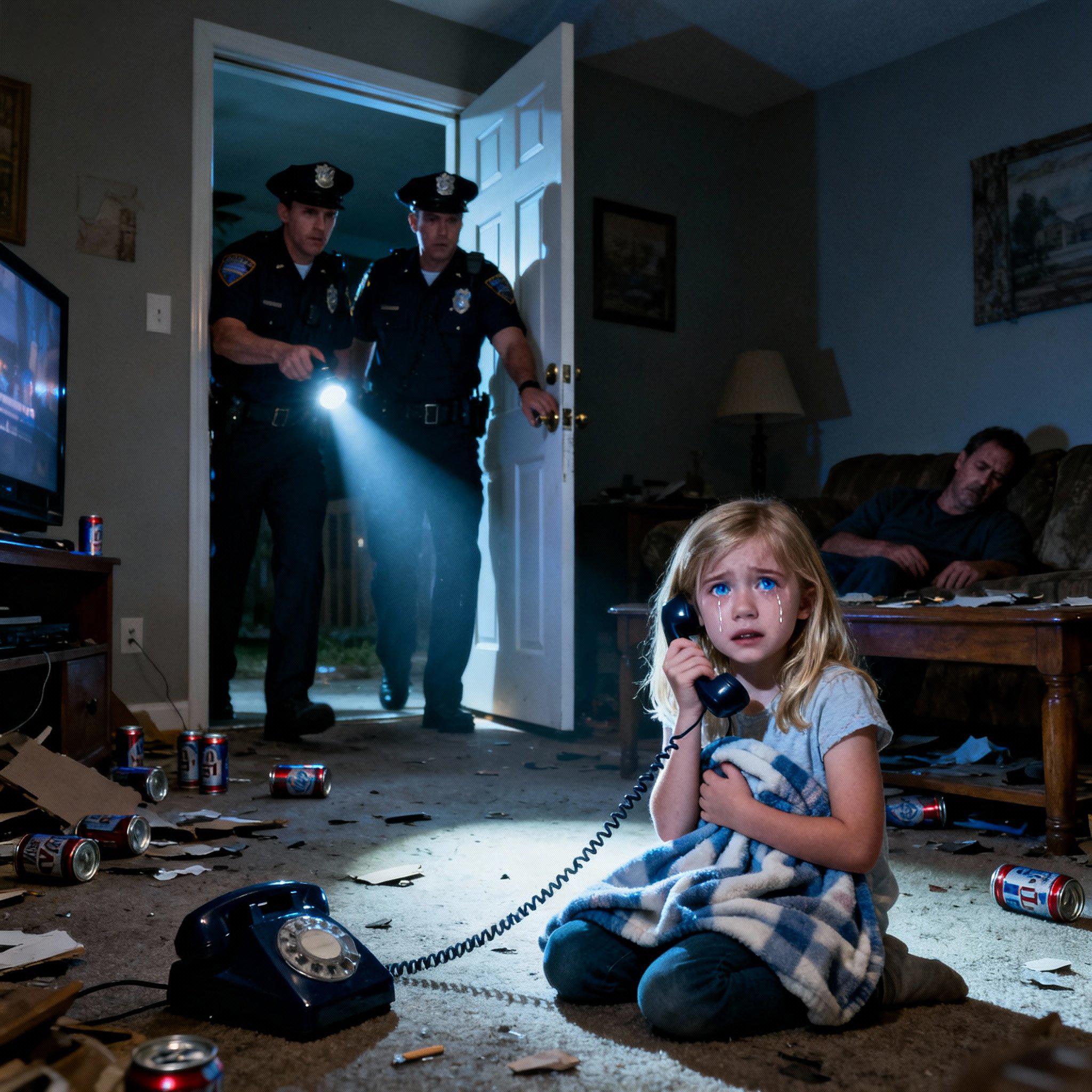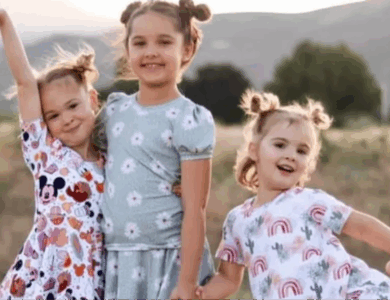Little Girl Calls 911 Over Dangerous Situation at Home — Authorities Rush to Help

At 6:42 p.m. on a quiet Wednesday in rural Ohio, 911 dispatcher Anna Meyers answered a call that would change everything. On the other end, a little girl’s voice trembled through sobs. “Please help me,” she cried. “Daddy’s snake… it’s so big—it hurts!”
Assuming a dangerous pet was involved, Meyers immediately dispatched officers. Within minutes, Officers David Ross and Michael Jensen arrived at a rundown house on the edge of town. The door hung open, the air thick with the smell of alcohol. Beer cans, broken furniture, and dirty dishes littered the floor. From the back of the house came faint, stifled crying.
In a dim bedroom, they found seven-year-old Emily Carter huddled on the floor, clutching a tattered blanket. Her small body bore bruises, her face pale. Her father, 38-year-old Charles Carter, slumped drunk on the couch. There was no snake. When Officer Jensen gently asked Emily where it was, the horrifying truth became clear: the “snake” was not an animal. It was the cruel nickname her father used for something far worse.
The call wasn’t about a pet—it was a desperate plea for help.
Charles Carter was arrested on the spot. Paramedics rushed Emily to the hospital, where doctors and social workers discovered the extent of her suffering. Her tiny body was covered in bruises of varying ages. Detective Sarah Dalton from the Child Protection Unit took her statement. Emily, voice trembling but determined, shared a story of years of abuse—her mother gone, her father drinking nightly, and the violence that followed.
Investigators combed the home and uncovered more evidence confirming Emily’s account. Prosecutors filed multiple charges, including aggravated assault, child endangerment, and exploitation. Charles initially denied everything, blaming misunderstandings and claiming his daughter made it up—but when confronted with the evidence, his defiance crumbled.
News of the arrest spread fast through the small town. Neighbors whispered, shocked by the reality hidden behind the Maple Street address. Meanwhile, Emily was placed in foster care with Margaret Lewis, a guardian trained in trauma recovery. “You’re safe now, sweetheart,” Margaret whispered nightly. “Nobody can hurt you anymore.”
With therapy, Emily began reclaiming her voice. She drew flowers, sunshine, and even police badges—symbols of hope and safety. The officers who rescued her visited, reinforcing that the world still held good people.
Three months later, Charles Carter’s trial commenced. The courtroom fell silent as prosecutors played the 911 call that exposed years of abuse. Experts detailed long-term trauma, and Emily, courageous beyond her years, spoke on the stand. “I told the truth because I didn’t want to be scared anymore,” she said firmly.
After only five hours of deliberation, the jury returned a unanimous verdict: guilty on all counts. Charles Carter was sentenced to life in prison without parole.
Emily, now permanently with the Lewis family, began to smile again. School became her passion, drawing her escape, and she shared a dream: to become a police officer, “like the ones who saved me.”
A single 911 call had uncovered years of suffering—but it also delivered hope, justice, and a future reclaimed. Emily’s story is a powerful reminder: courage can emerge from fear, and one brave voice can change everything.
If this story moved you, share it to honor Emily’s courage and help spread awareness about child safety and the power of speaking up.





